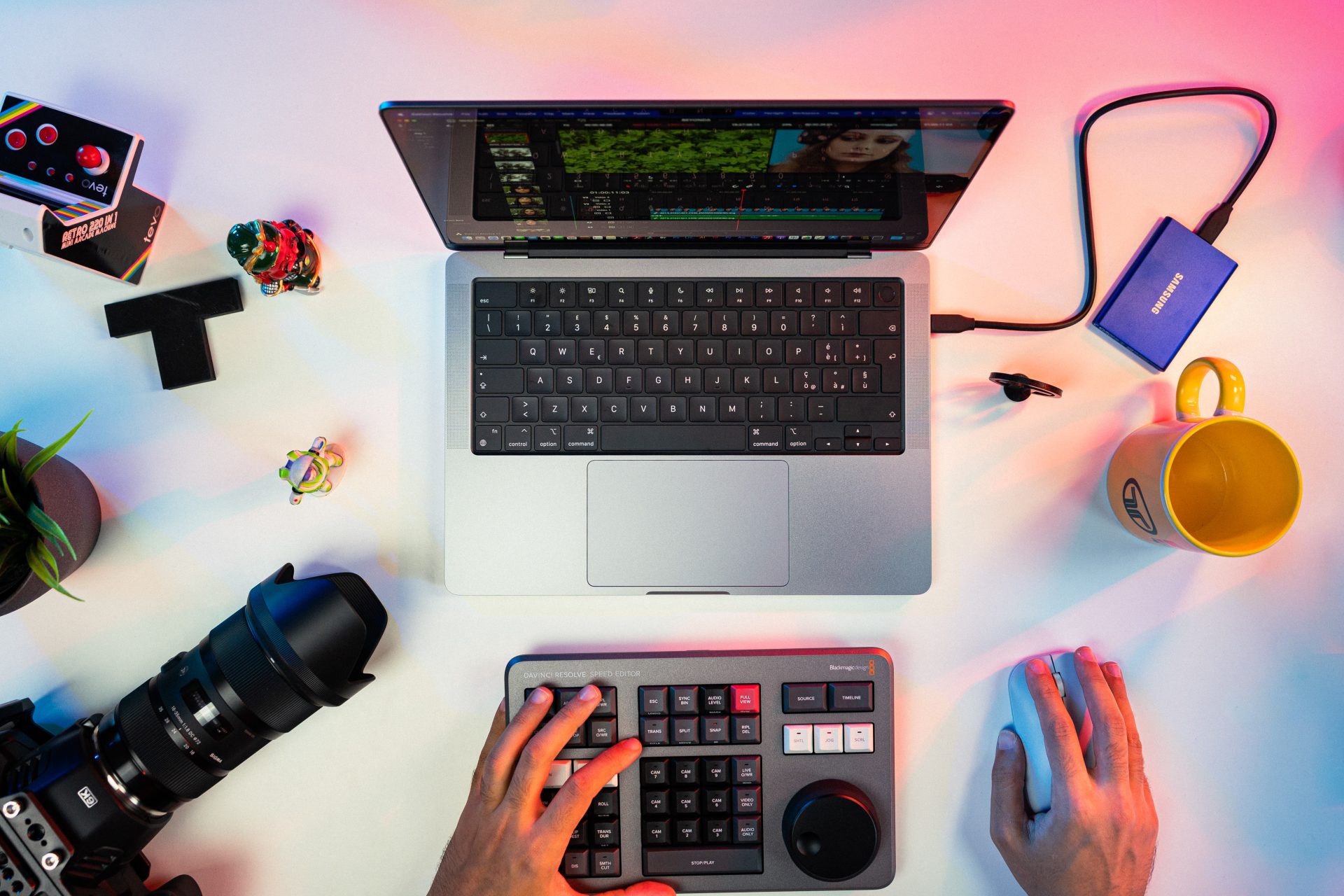Introduction to Recording a YouTube Video on Mac
In recent years, video content has become an increasingly important part of the online landscape. From educational tutorials to entertainment vlogs, YouTube is home to a diverse array of video content that attracts millions of viewers every day.
If you’ve ever wanted to share your own ideas, stories, or talents with the world, recording a YouTube video on a Mac is a great place to start.
Whether you’re an experienced videographer or a complete beginner, recording a YouTube video on a Mac is a relatively straightforward process that anyone can do with the right tools and some basic knowledge. In this article, we’ll discuss the five simple steps to recording a YouTube video on your Mac, from setting up your system to exporting the final product.
Before we dive into the steps, it’s important to note that there are a few things you’ll need to get started. First and foremost, you’ll need a Mac computer with a built-in camera and microphone, or an external camera and microphone.
You’ll also need video recording software, such as Quicktime Player, iMovie, or ScreenFlow, to capture and edit your video. Finally, you’ll need a reliable internet connection to upload your video to YouTube.
With these essentials in hand, you’re ready to start recording your own YouTube video on your Mac. By the end of this article, you’ll have all the knowledge and tools you need to start creating and sharing your own videos on YouTube.
Step 1: Set Up Your Mac for Video Recording
It’s important to make sure your Mac is set up properly to capture high-quality audio and video before you start recording your YouTube video.
To do this, open the “System Preferences” on your Mac by clicking on the Apple icon in the top left corner of your screen and selecting “System Preferences.”
Once the “System Preferences” window opens, click on the “Sound” icon.
Under the “Input” tab, select your desired microphone from the list of available devices. While under the “Output” tab, select your desired speakers from the list of available devices.
If you want to test your audio settings, you can click on the “Input” or “Output” tab and speak or play a sound into your microphone or speakers. The volume meter should move as you speak or play the sound, indicating that your settings are working correctly.
Click “Apply” to save your changes and close the “System Preferences” window. With your system set up and tested, you’re ready to move on to the next step.
Step 2: Choose a Video Recording Software
Now that your Mac is set up for video recording, it’s time to choose a video recording software that meets your needs and experience level.
There are a variety of options available, each with its own set of features and benefits, and here are some popular options for you to check.
First, you may consider Quicktime Player, which is a built-in application on all Macs that allows you to record audio and video from your computer. It’s a simple, user-friendly option that is great for beginners.
Another option for Mac users is iMovie, a more advanced video editing software that is great for creating polished, professional-looking videos. It allows you to record audio and video from your computer, as well as import and edit video footage from other sources.
iMovie includes a wide range of tools and features for trimming, splicing, and adding effects to your video, as well as options for titling and credits.
Finally, you may consider ScreenFlow, a professional-grade screen recording and video editing software that is perfect for creating tutorials, demos, and other instructional videos. It allows you to record your screen, camera, and audio simultaneously, as well as add annotations, callouts, and other effects to your video.
ScreenFlow is a powerful tool that is great for creating high-quality videos, but it may be more complex than some users need.
No matter which software you choose, make sure to familiarize yourself with its features and capabilities before you start recording to ensure a smooth and successful video creation process.
Step 3: Prepare Your Video Set Up
Before you start recording your YouTube video, it’s important to take a few minutes to prepare your video setup. This will help ensure that your video looks and sounds professional and is easy to watch for your audience.
First and foremost, make sure your camera is positioned at a good angle and is focused on you or the subject of your video. It’s also important to consider the lighting in the room as it can affect the quality of your video.
Next, consider choosing a suitable background for your video. A plain, neutral background is often best, as it allows the viewer to focus on you or the subject of your video.
Before starting the recording, it’s a good idea to test your audio and video settings to make sure everything is working properly. Make sure your desired microphone and camera are selected, and adjust the volume levels as needed. You may also want to adjust the resolution and frame rate of your video to ensure it looks clear and smooth.
By preparing your video setup in advance, you’ll be able to focus on delivering a great performance or message without worrying about technical issues.
Step 4: Start Recording

Now that you have set up your Mac for video recording and chosen your video recording software, it is time to start recording your YouTube video.
To do this, open the video recording software and click on the “Record” button. This will typically open a new window or panel that allows you to select your desired microphone and camera, as well as specify the area of the screen you want to record.
Once you’ve set up your recording, click the “Record” button to begin capturing audio and video. You may see a countdown timer before the recording starts, giving you a few seconds to get ready.
Then, start speaking or performing as desired. Remember to keep your volume and pace consistent, and pause briefly between sentences or ideas to give your audience time to absorb the information.
Finally, click the “Stop” button to end the recording and your video will be saved to your Mac in the specified file format.
If you need to pause the recording at any point, you can click the “Pause” button to temporarily stop the recording. When you’re ready to continue, click the “Resume” button to pick up where you left off.
Starting the recording is a simple process that only requires a few clicks of your mouse. By following these steps, you’ll be able to capture high-quality audio and video of your YouTube video on your Mac.
Step 5: Edit and Export Your Video
After you’ve recorded your YouTube video on your Mac, the final step is to edit and export the video in a format that is suitable for uploading to YouTube.
To do this, open the video recording software and locate your recorded video. Click on that video to open it in the video editor. From there, you can trim any unnecessary footage, splice together different segments of the video, and add any desired effects or transitions.
Next, use the editing tools and features of the software to fine-tune your video. You may want to adjust the volume levels, crop the frame, add text or graphics, or apply filters to change the look and feel of your video.
When you’re satisfied with your edited video, it’s time to export it in a format that is suitable for uploading to YouTube.
Click on the “Export” or “Share” button and select “YouTube” from the list of options. This will open a new window where you can enter your YouTube login information and upload the video directly to your channel.
Alternatively, you can export the video as a file on your Mac and upload it to YouTube later by clicking on the “Export” or “Share” button and selecting “Export as File” from the list of options. When the export is complete, you can log in to your YouTube account and upload the video to your channel.
Editing and exporting your YouTube video is the final step in the process of recording a video on your Mac. By following these steps, you’ll be able to create a polished, professional-looking video that is ready to share with the world.
Conclusion: Congratulations, You’re Now Ready to Share Your YouTube Video on Your Mac
In conclusion, recording a YouTube video on your Mac is a simple process when you follow these five easy steps. By setting up your Mac for video recording, choosing the right video recording software, preparing your video setup, and editing and exporting your video, you’ll be able to create high-quality videos that are sure to engage your audience.
Remember to take the time to prepare your setup, and make sure to test your recording before starting the actual filming. With a bit of practice, you’ll soon be a pro at creating YouTube videos on your Mac. So, don’t wait any longer, grab your Mac, and start recording your first video today.
Frequently Asked Questions
To record a YouTube video on your Mac, you’ll need a Mac computer with a built-in camera and microphone, or an external camera and microphone that can be connected to your Mac.
You’ll also need video recording software and a reliable internet connection to upload your video to YouTube.
To set up your Mac for video recording, open the “System Preferences” on your Mac and click on the “Sound” icon. Under the “Input” tab, select your desired microphone from the list of available devices. Under the “Output” tab, select your desired speakers.
If you want to test your audio settings, you can click on the “Input” or “Output” tab and speak or play a sound into your microphone or speakers. The volume meter should move as you speak or play the sound, indicating that your settings are working correctly.
Some popular video recording software options for Mac include Quicktime Player, iMovie, and ScreenFlow. Quicktime Player is a simple, user-friendly option that is great for beginners.
iMovie is a more advanced video editing software that is great for creating polished, professional-looking videos. ScreenFlow is a professional-grade screen recording and video editing software that is perfect for creating tutorials, demos, and other instructional videos.
When preparing your video setup, it’s important to consider your camera and lighting, background, and audio and video settings.

